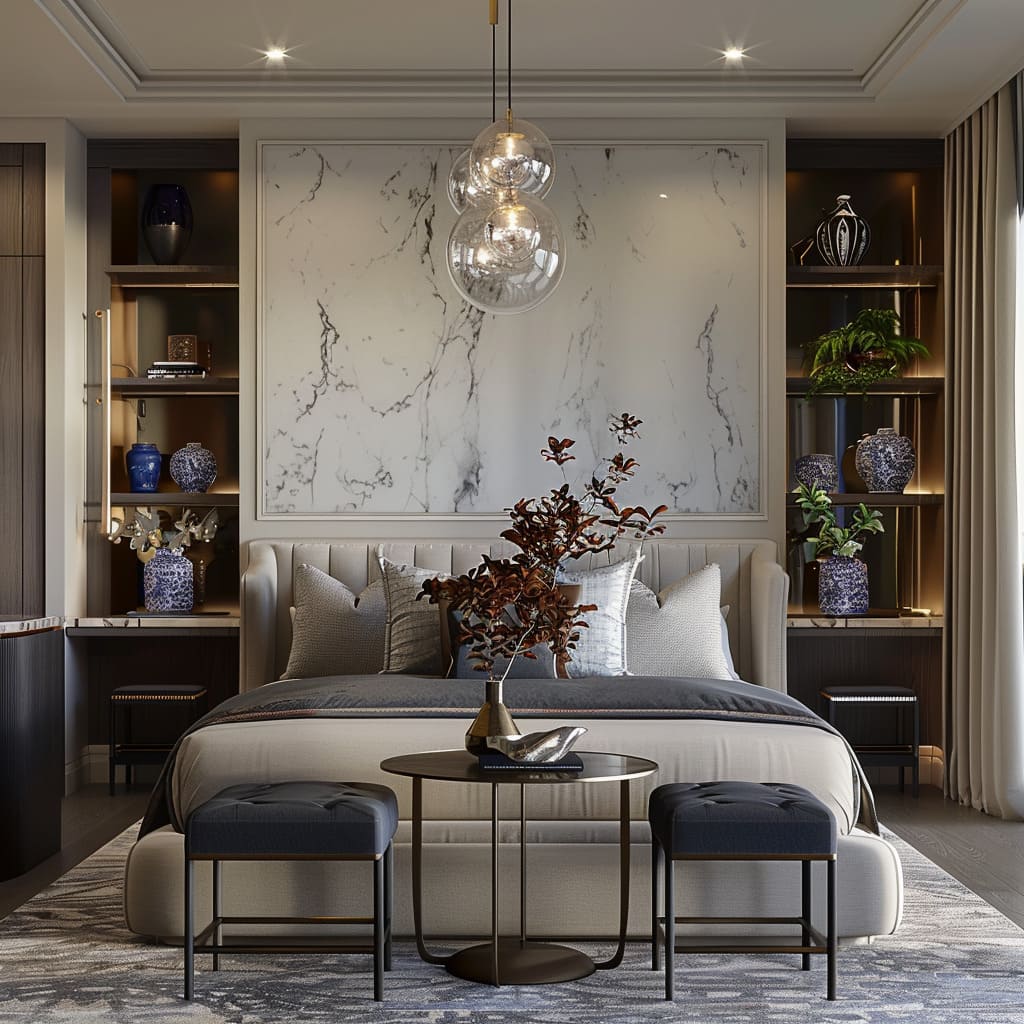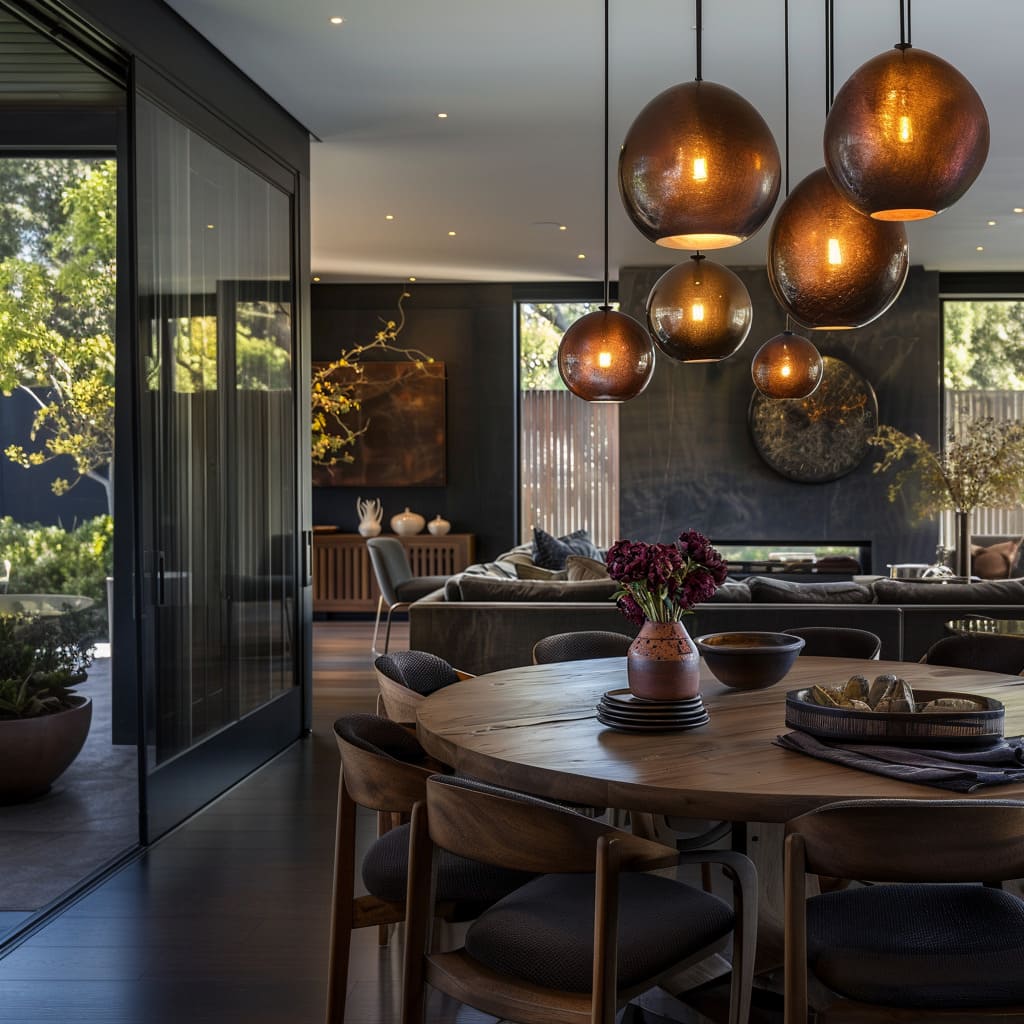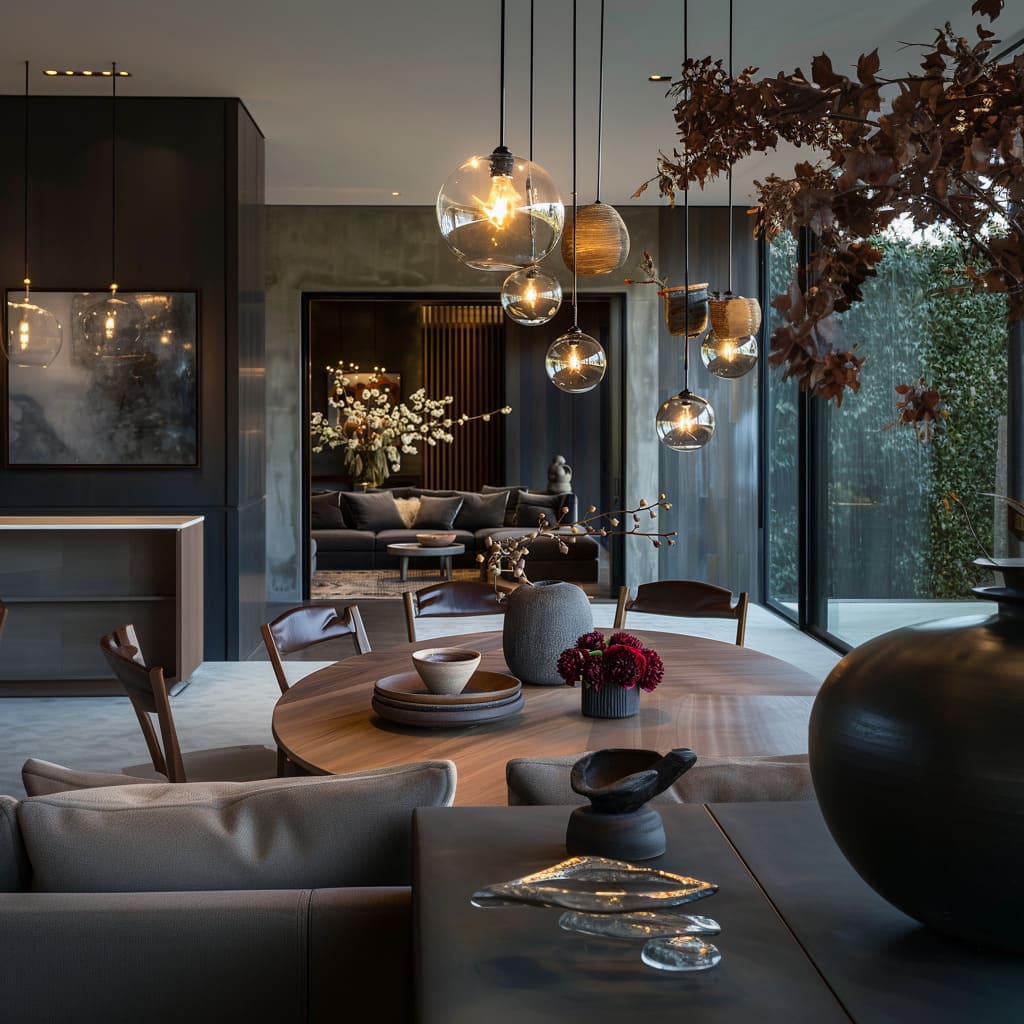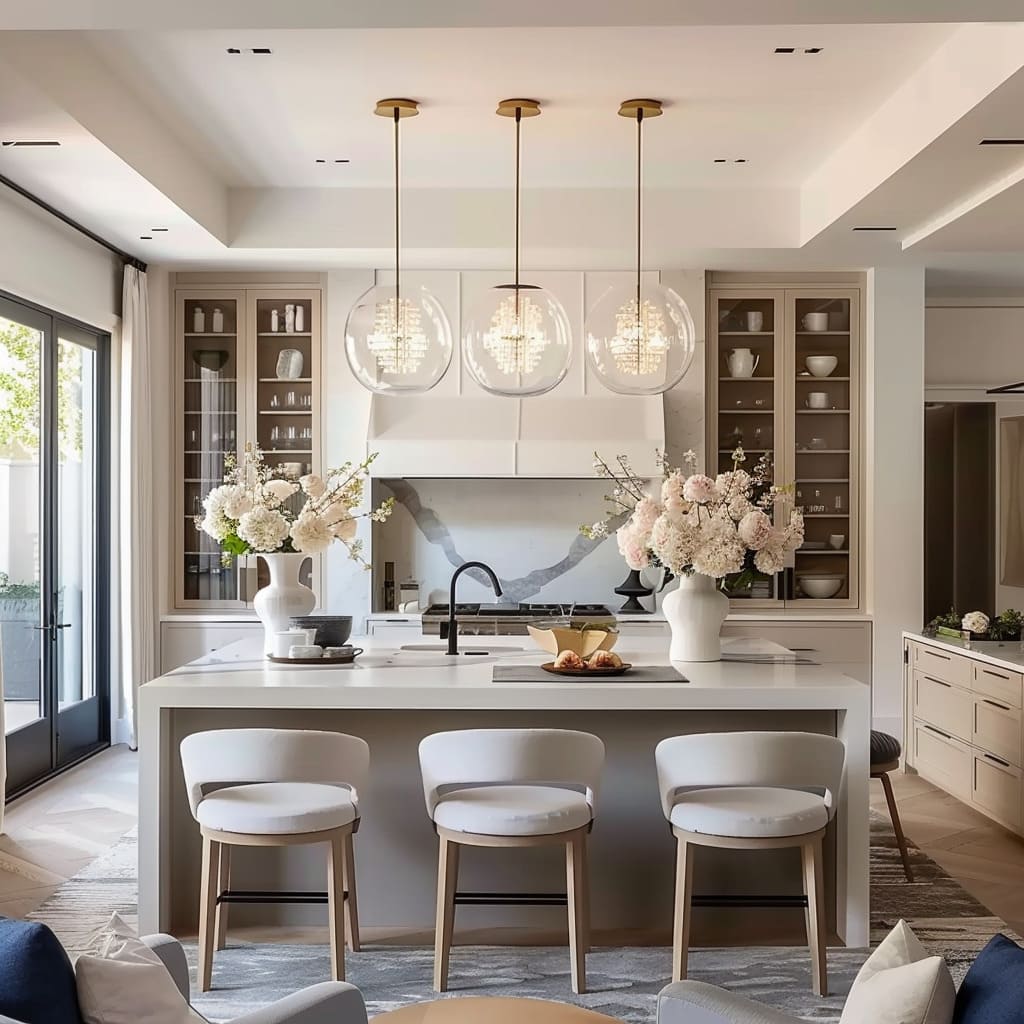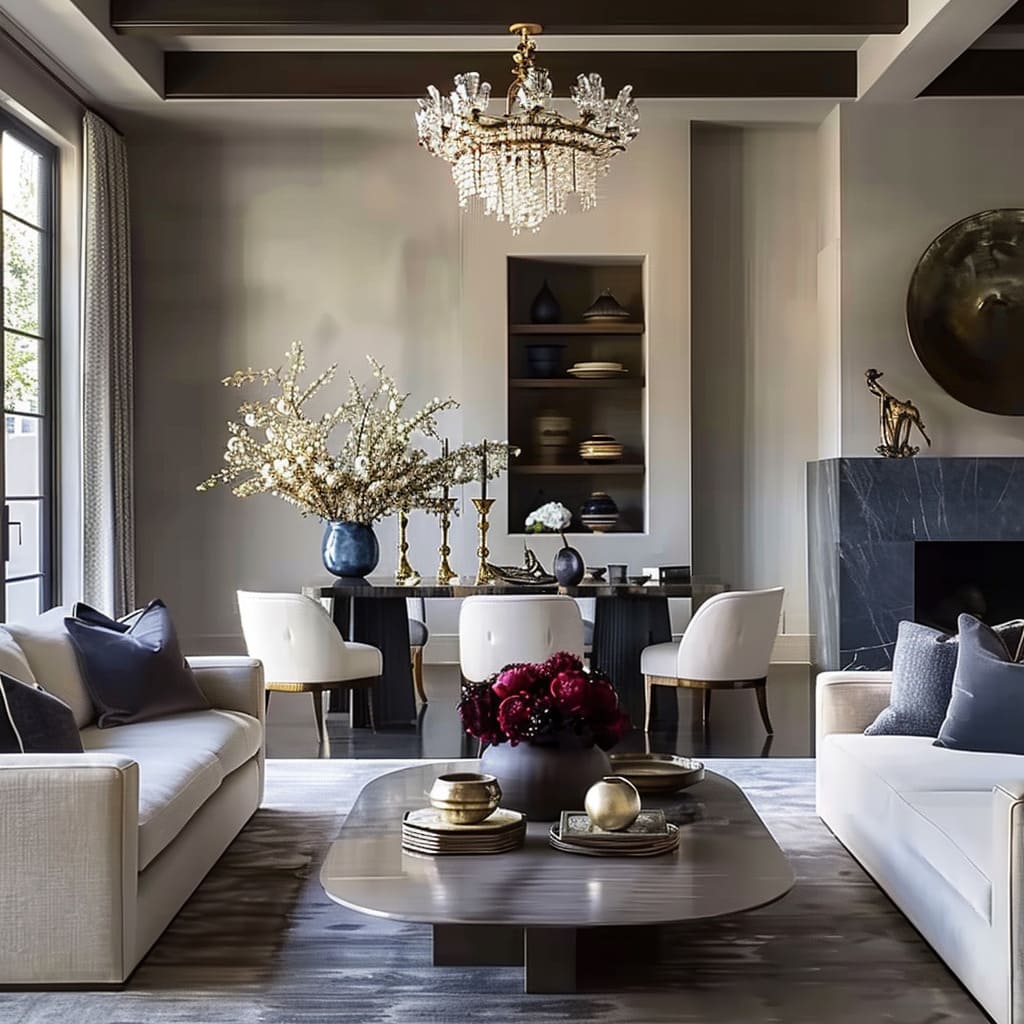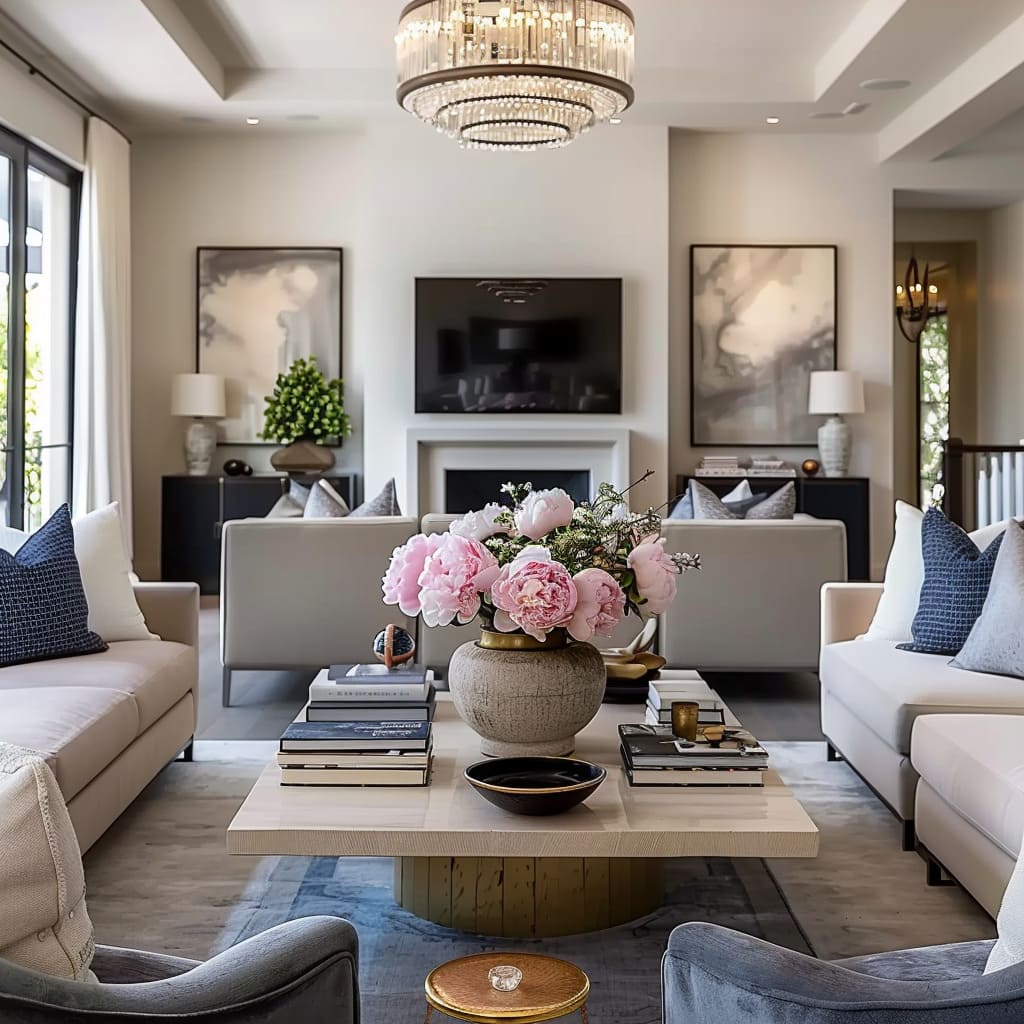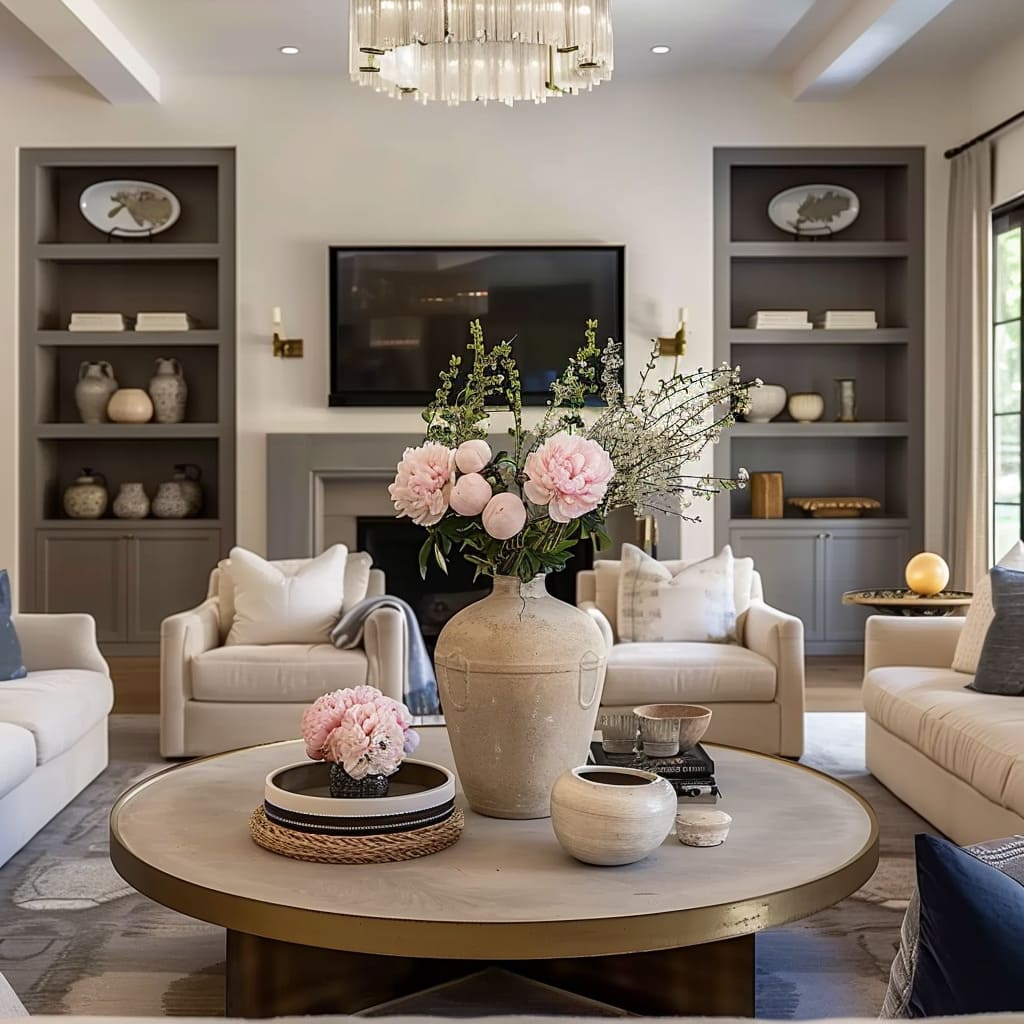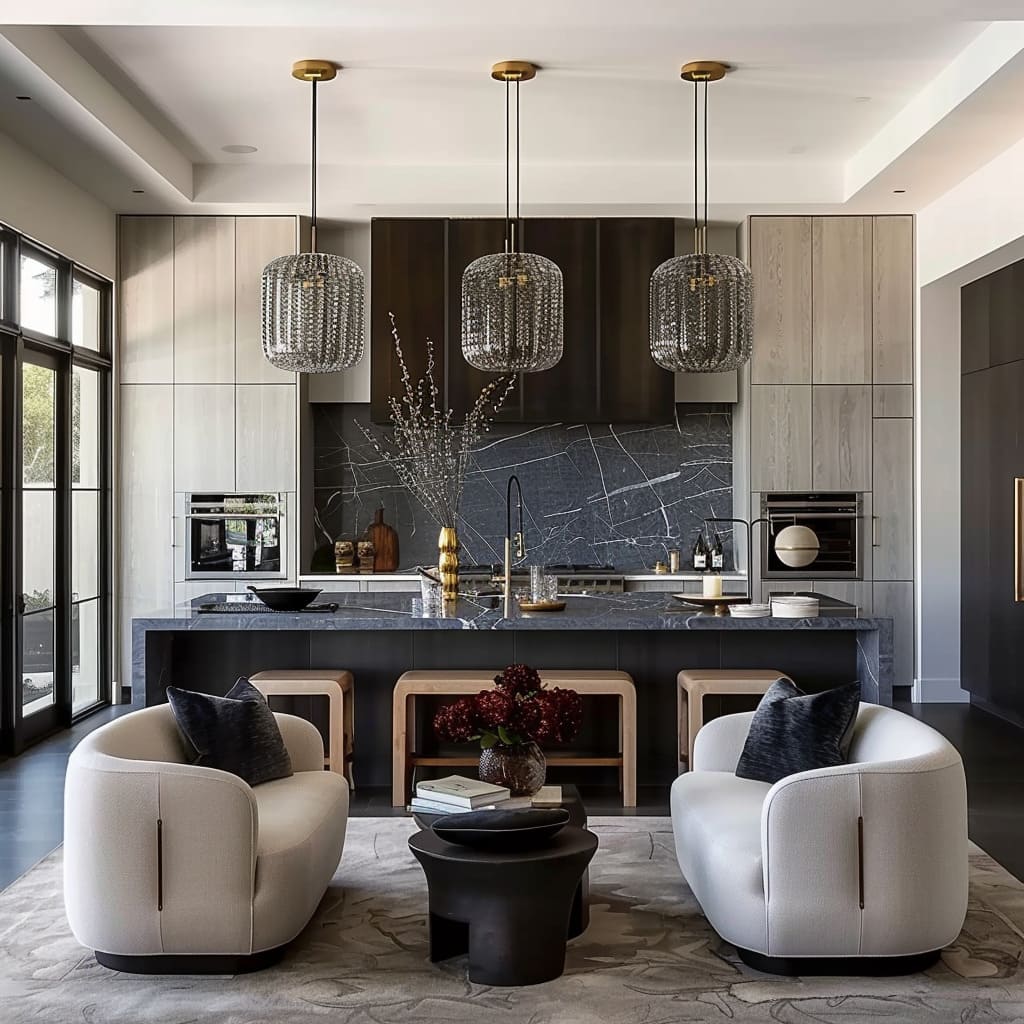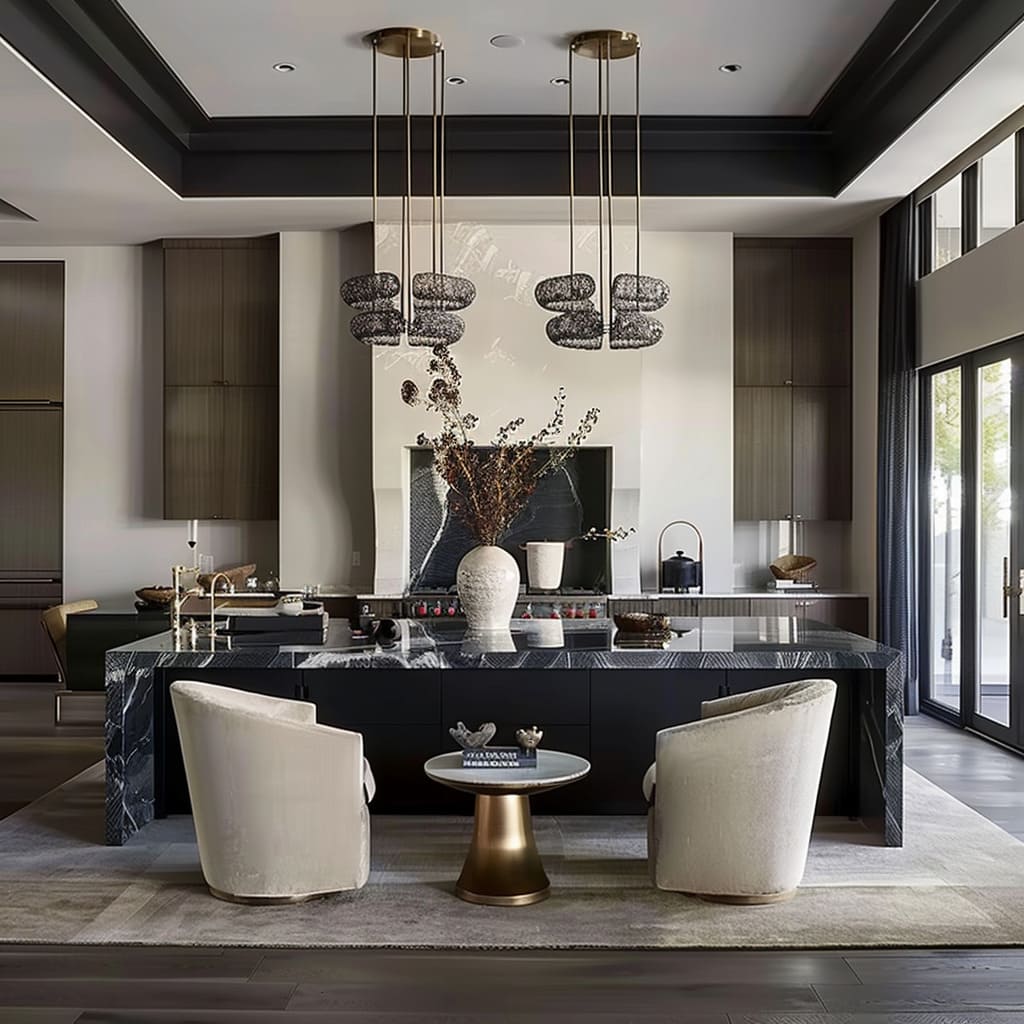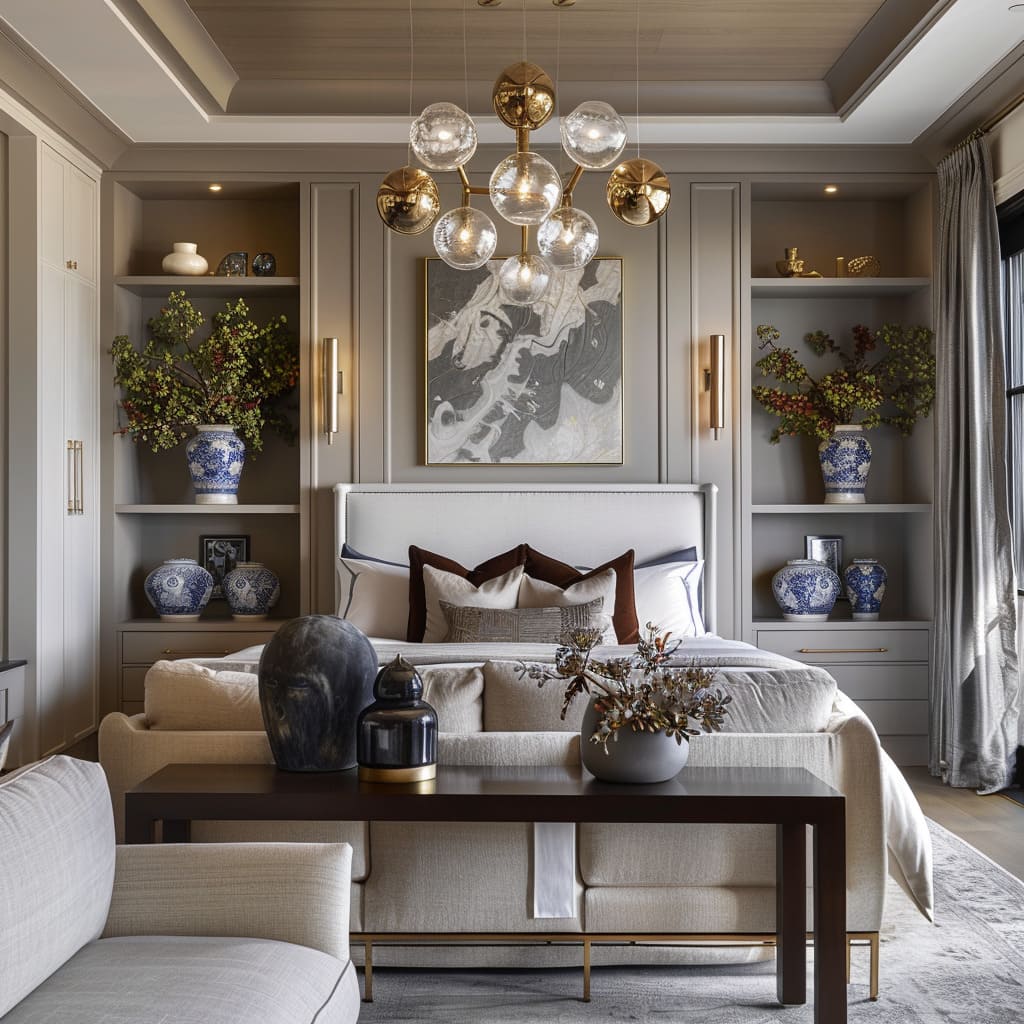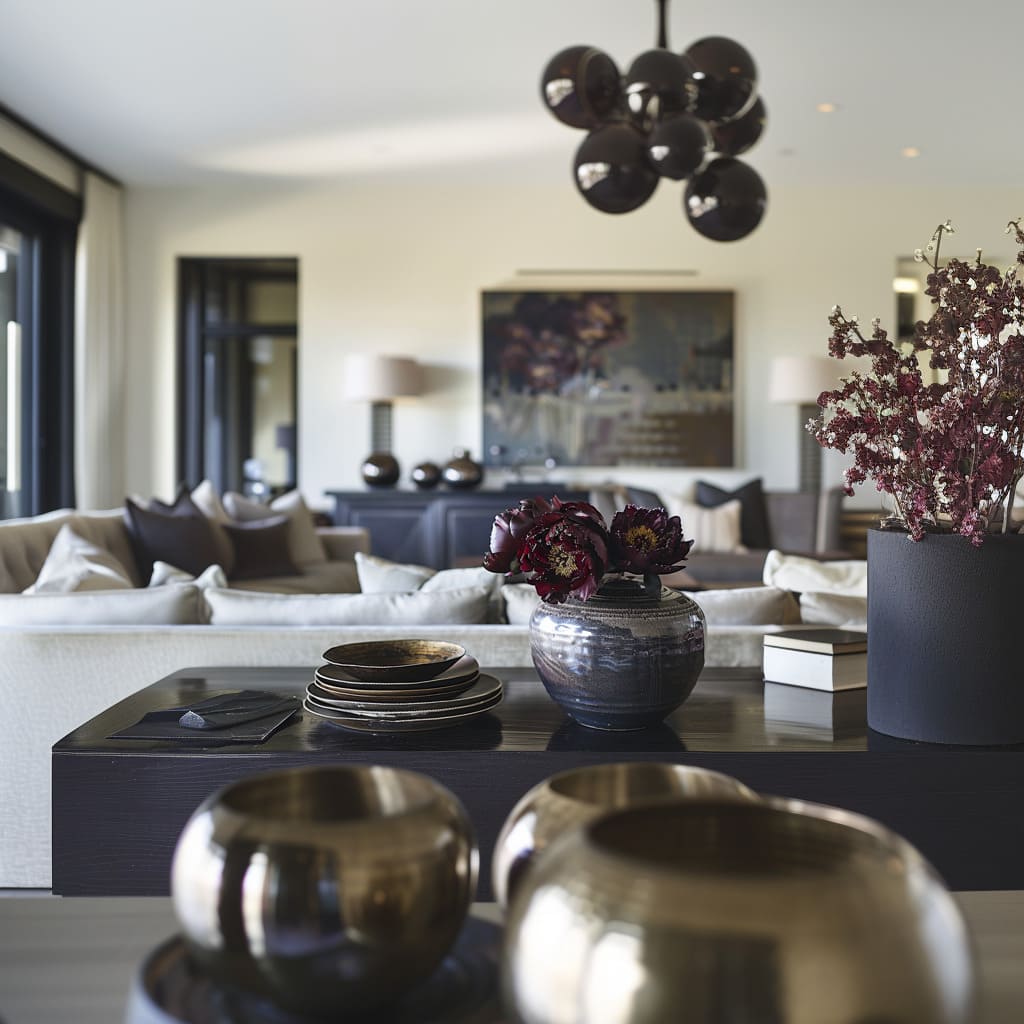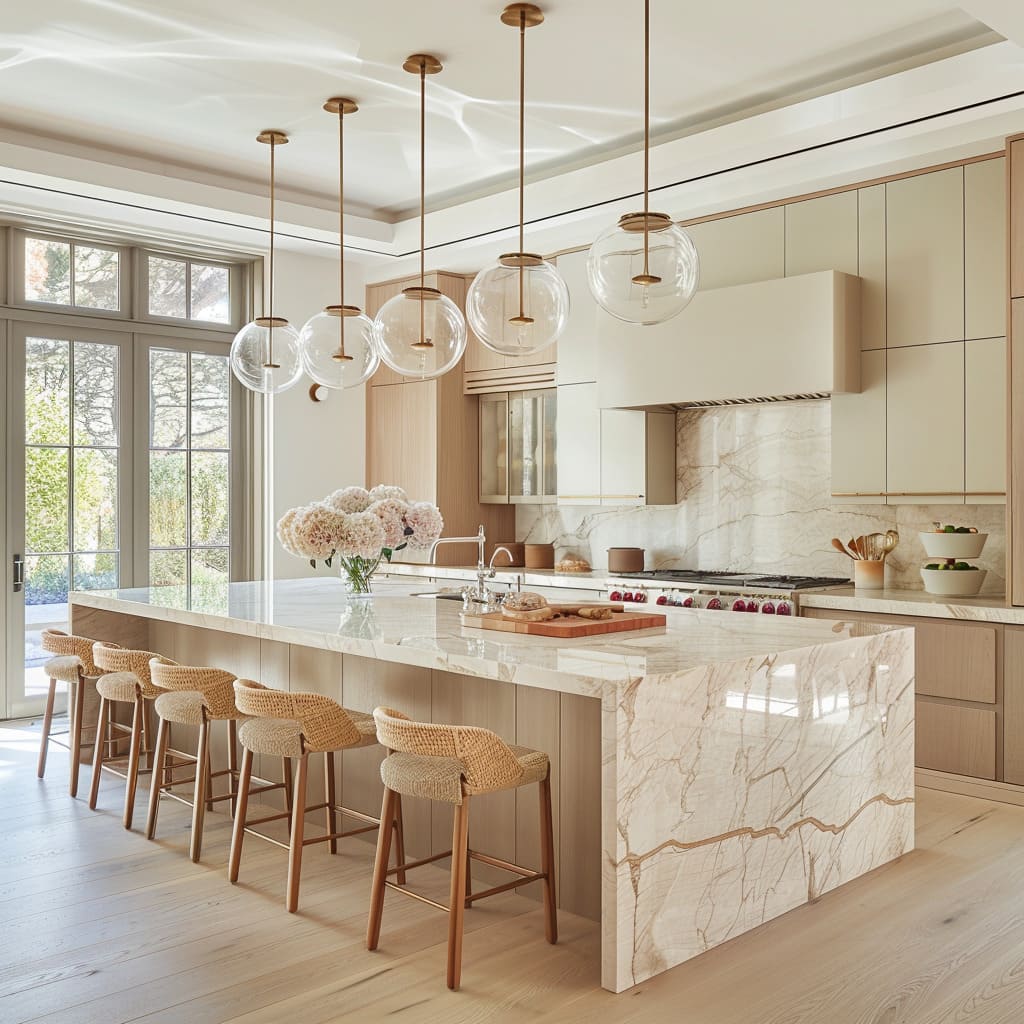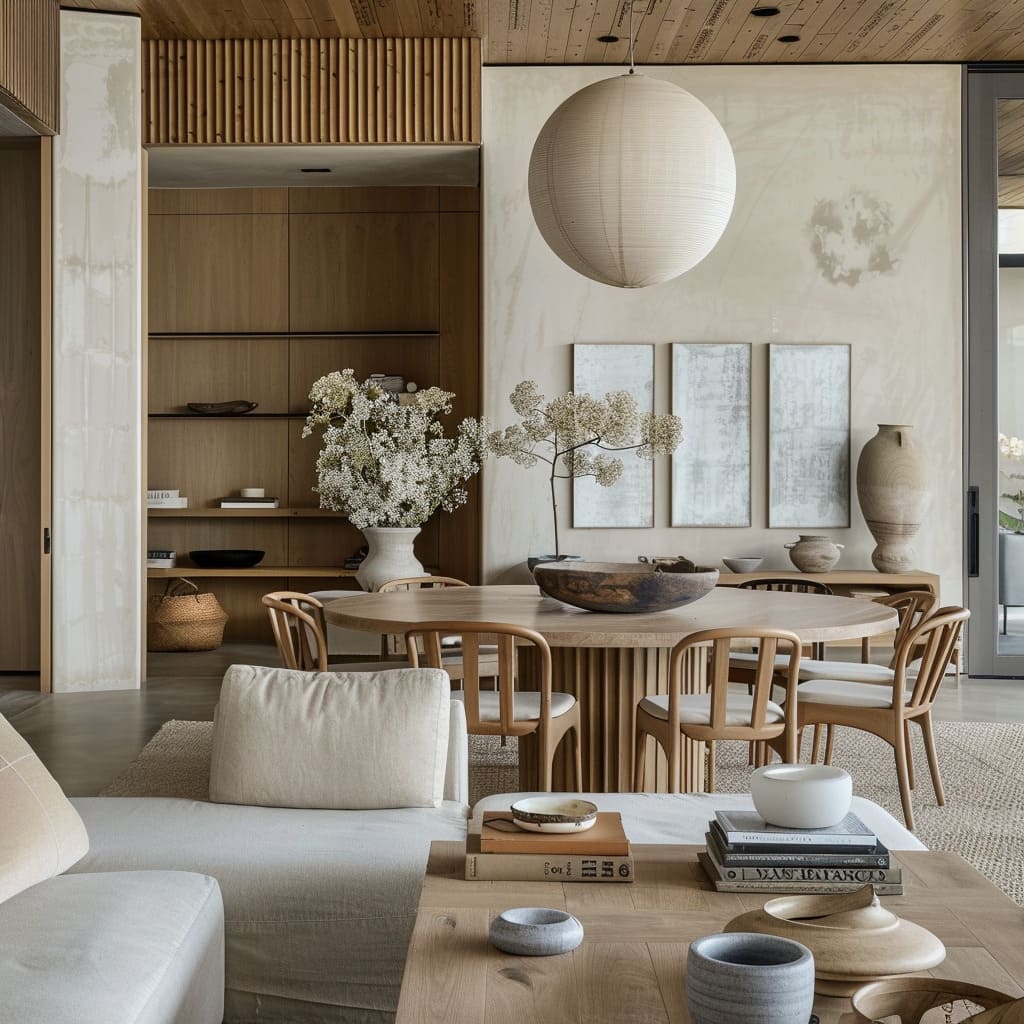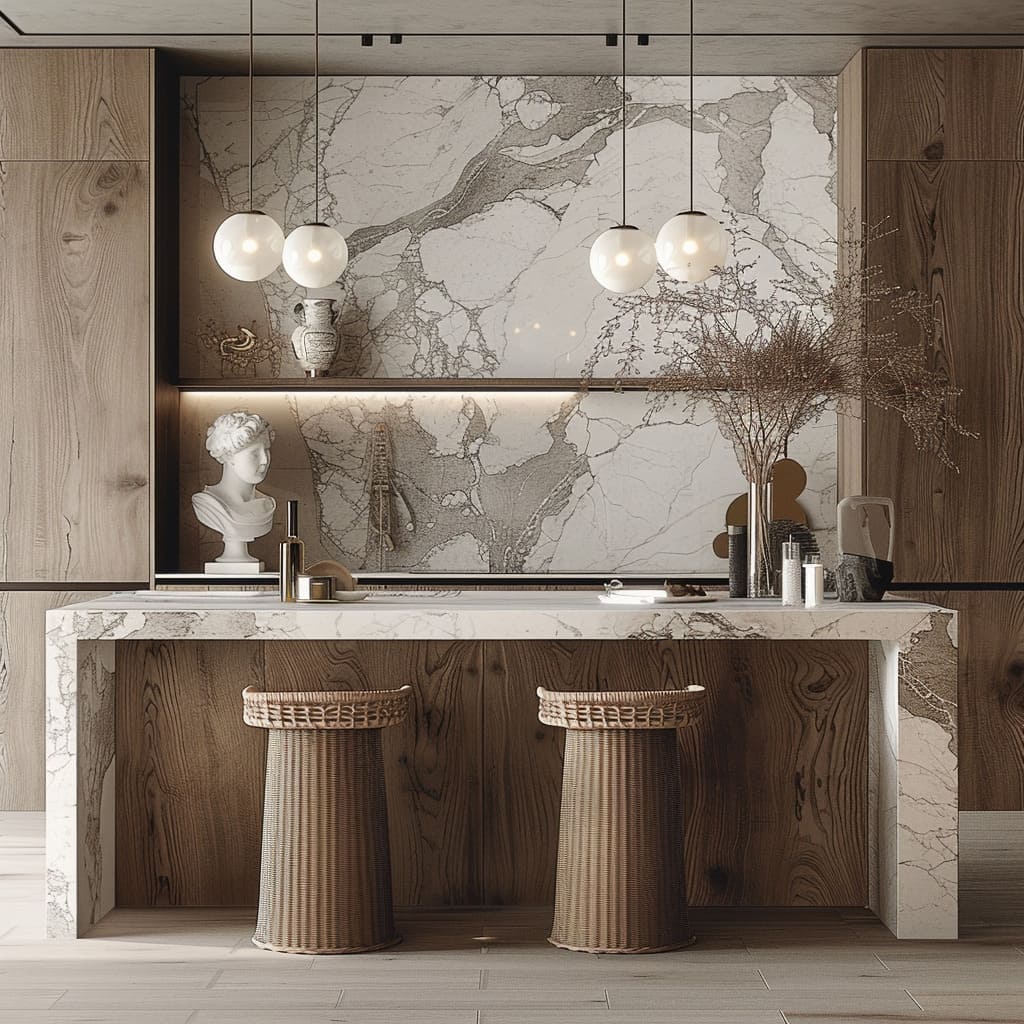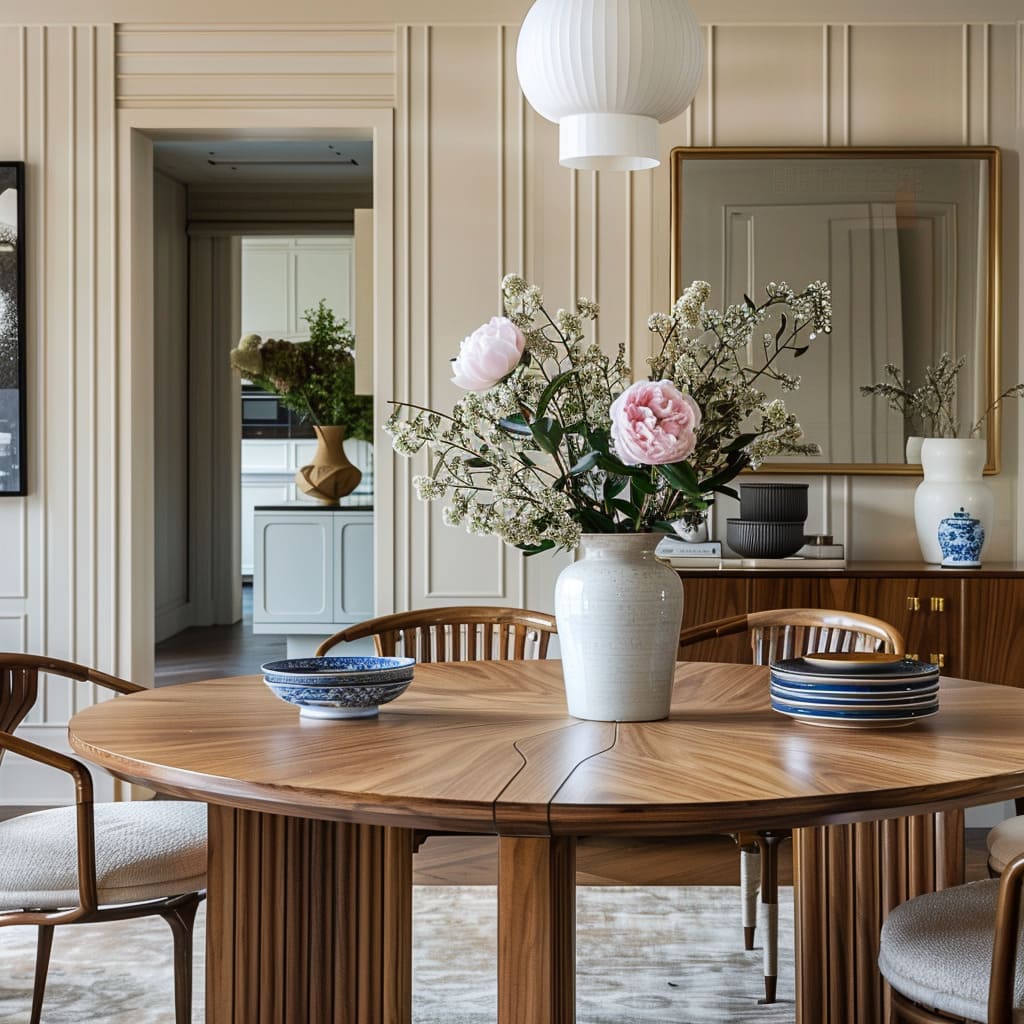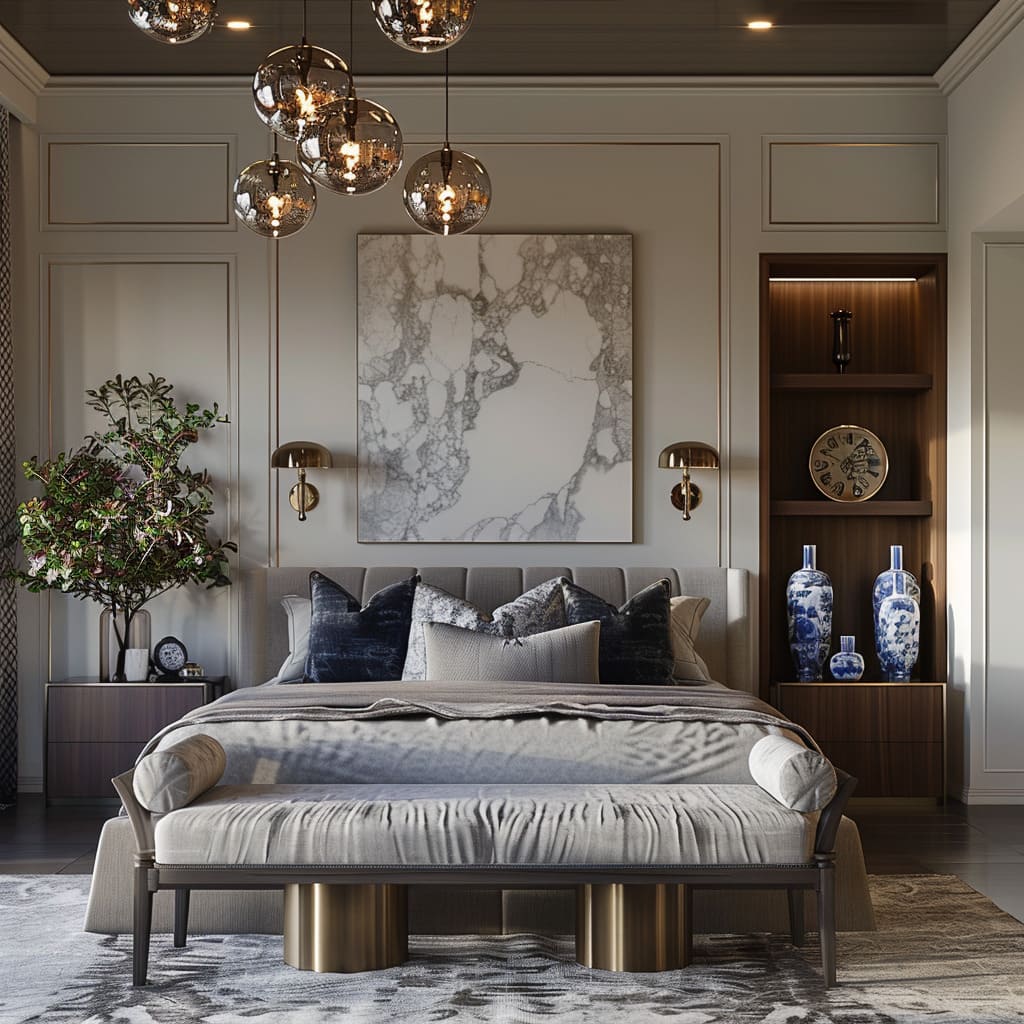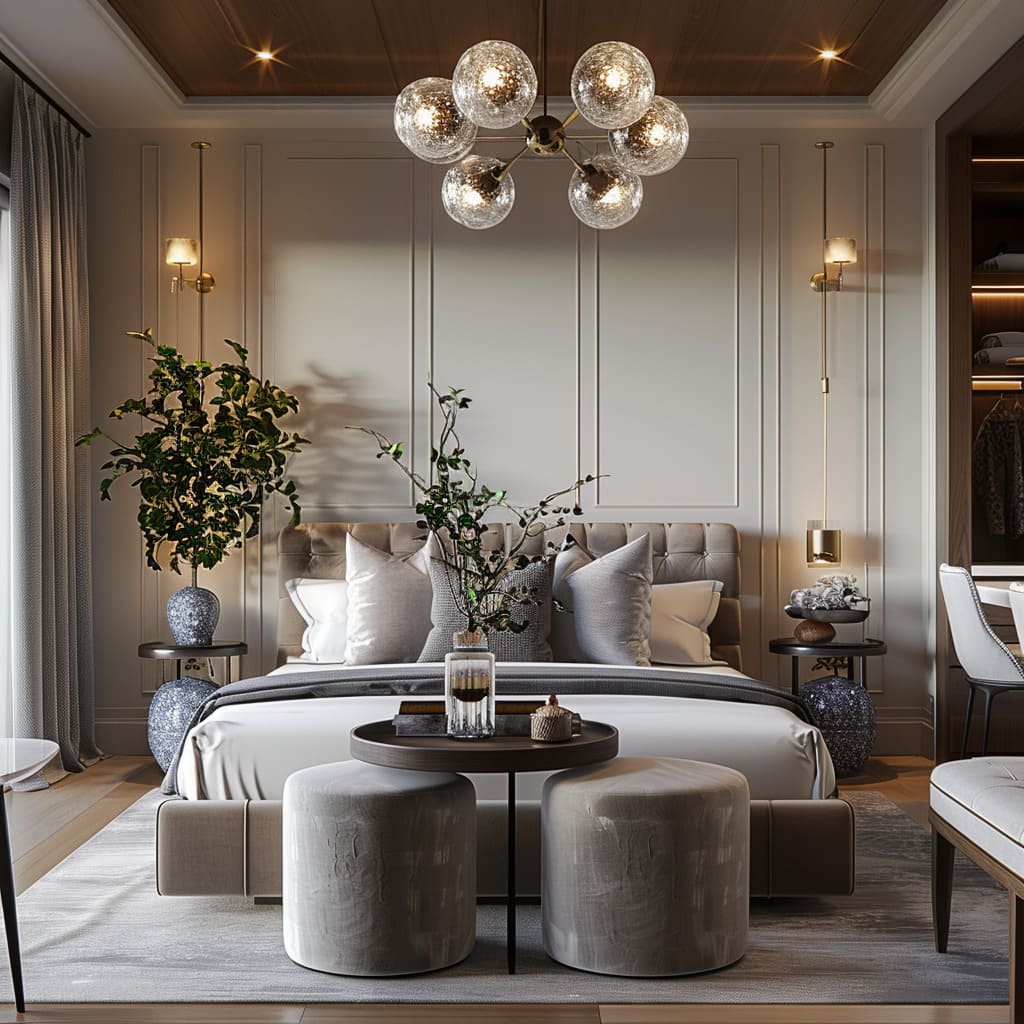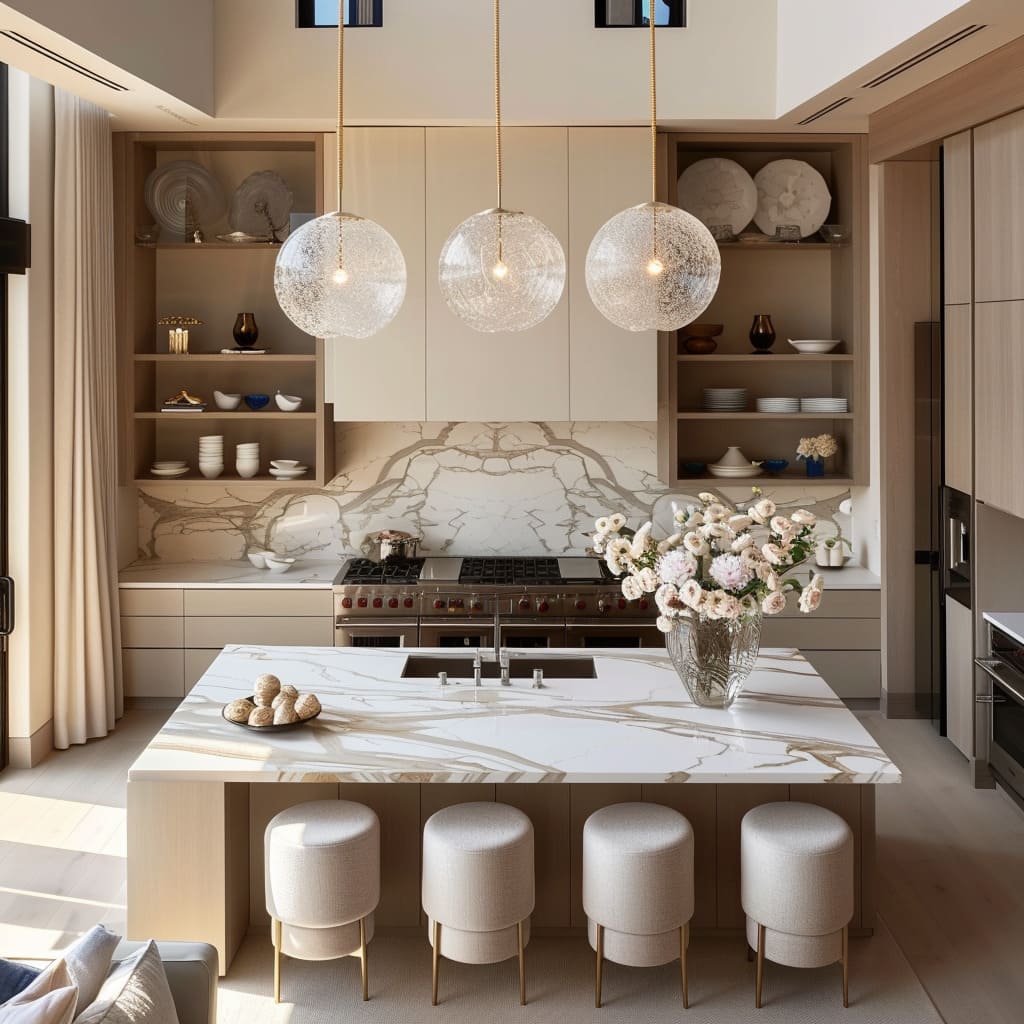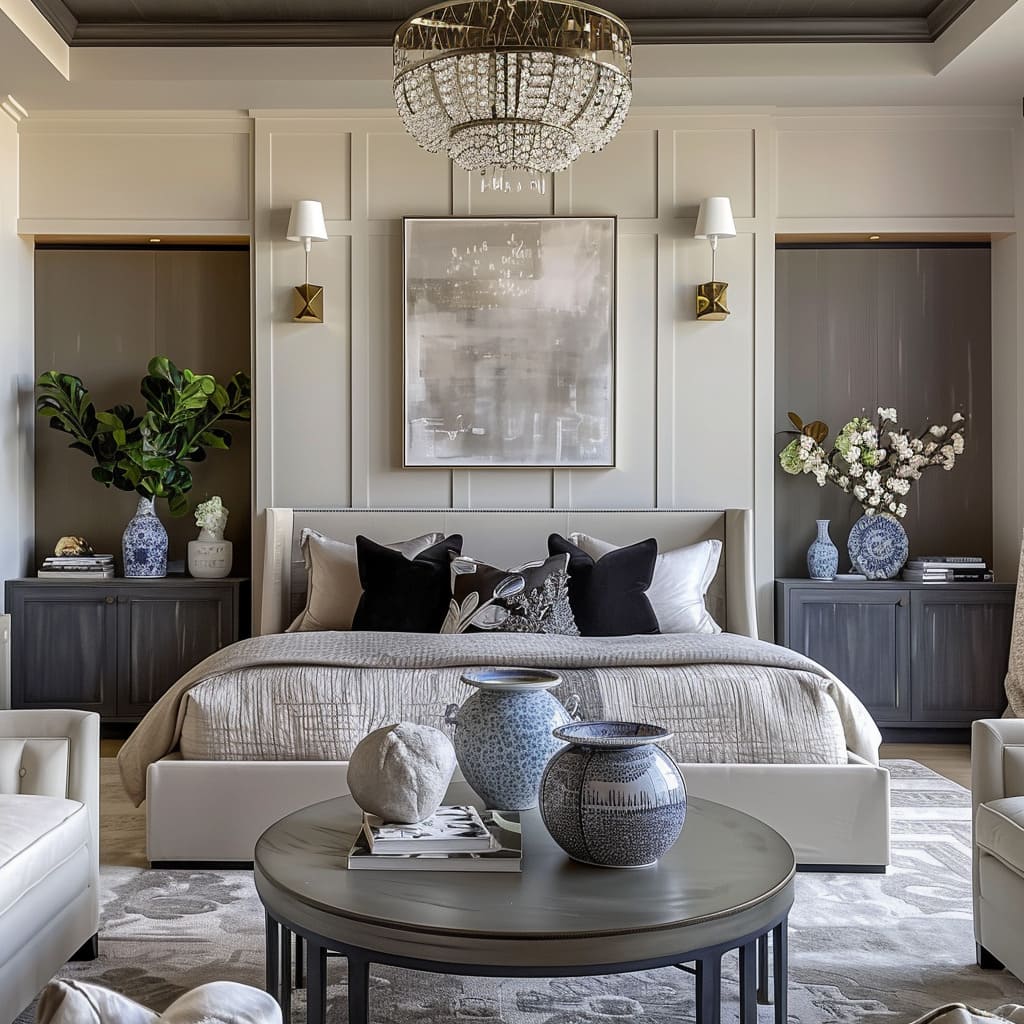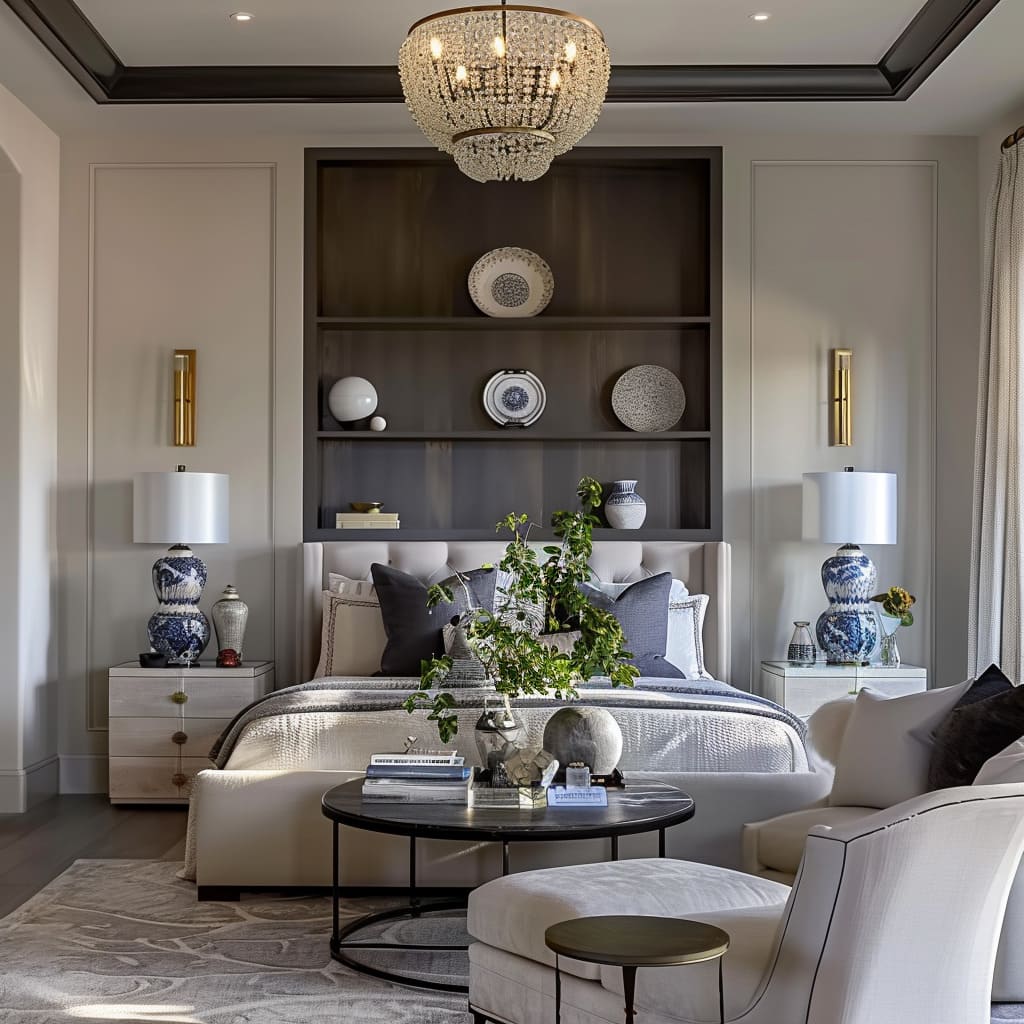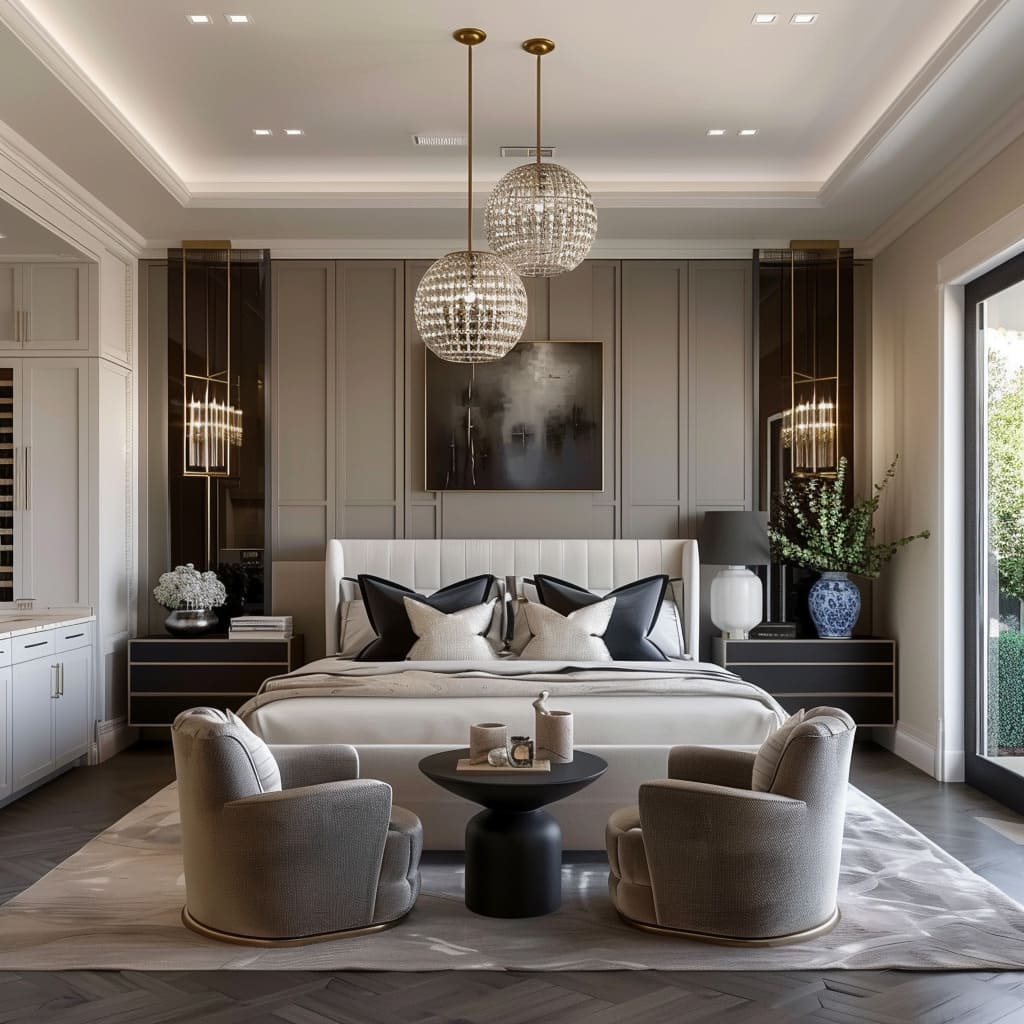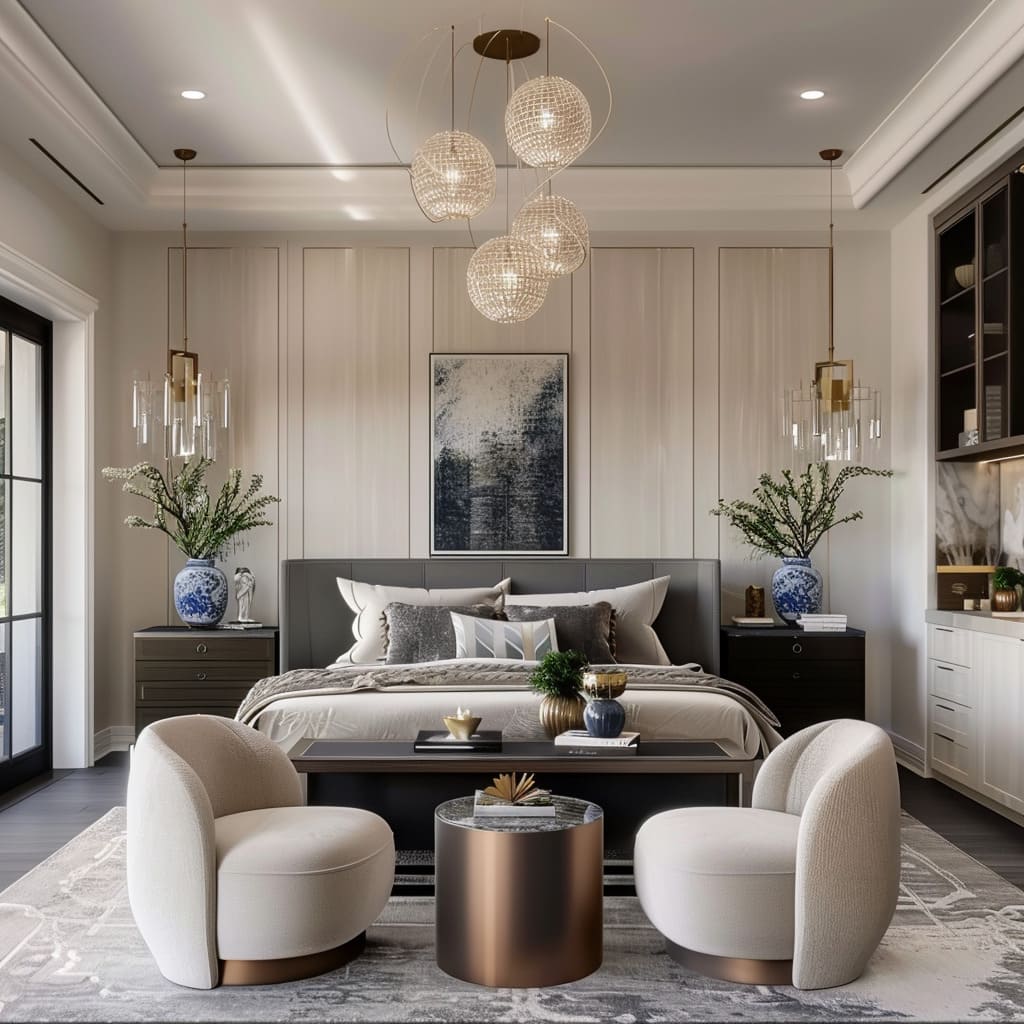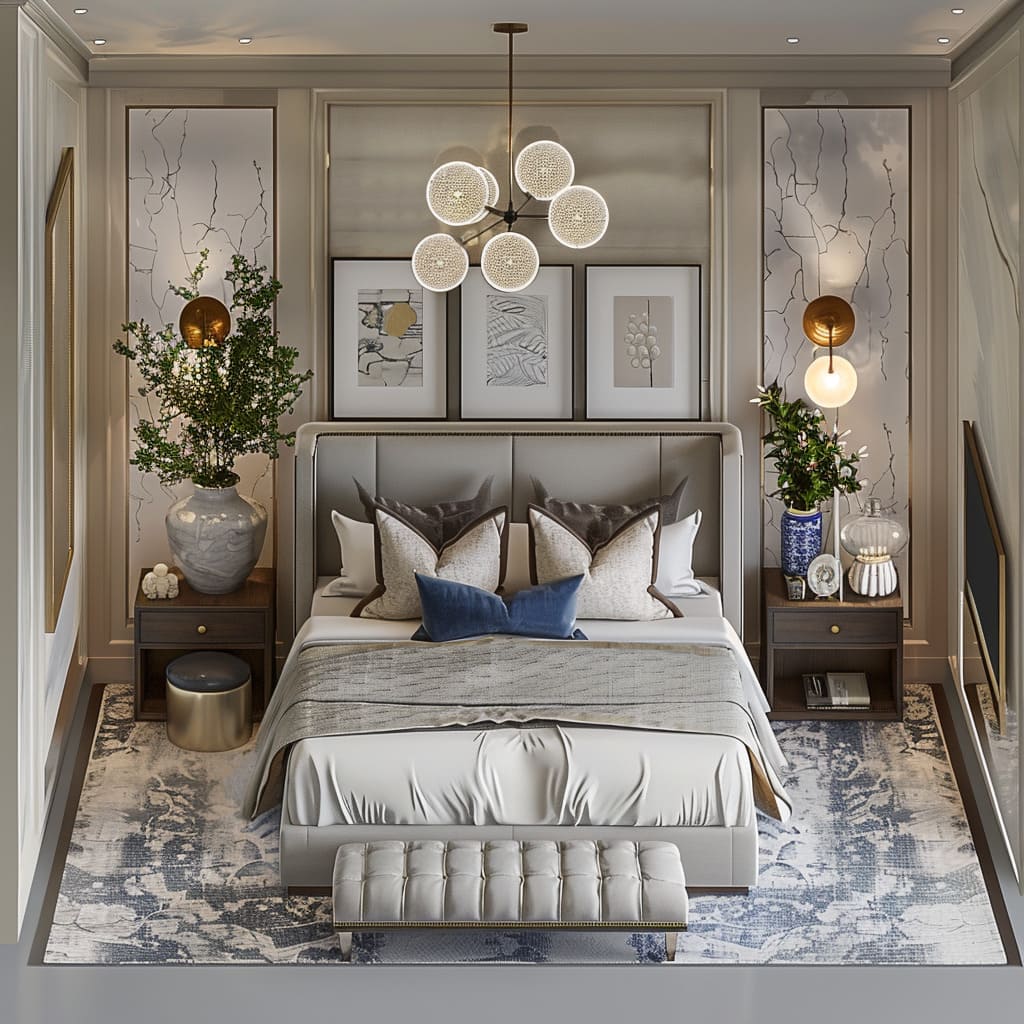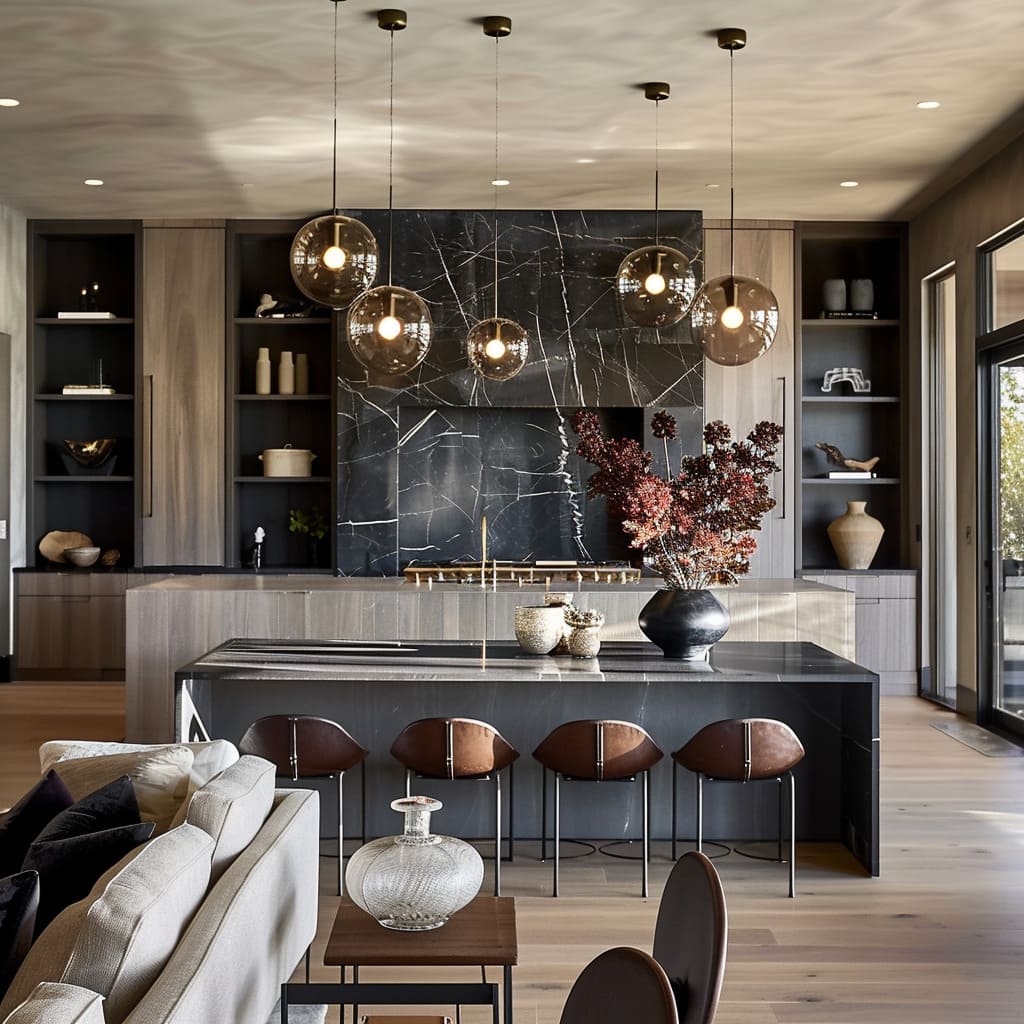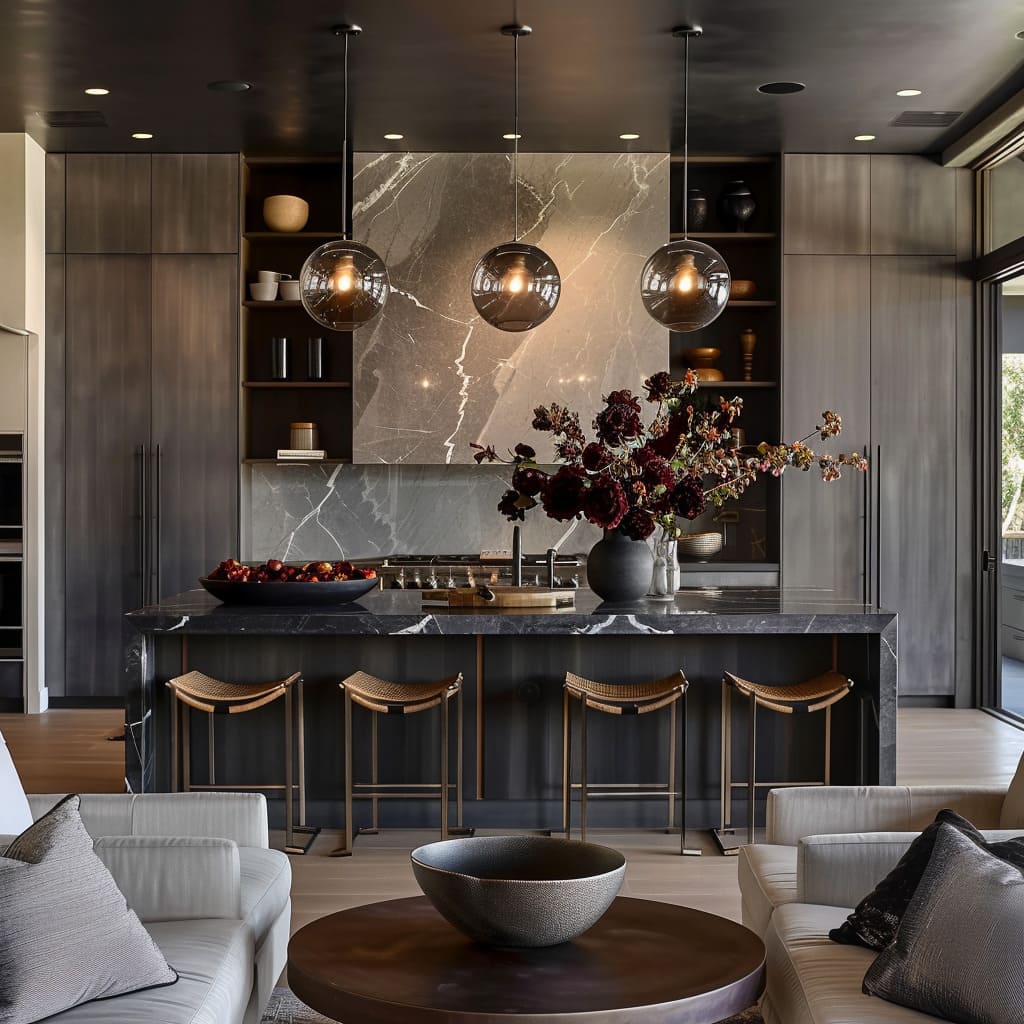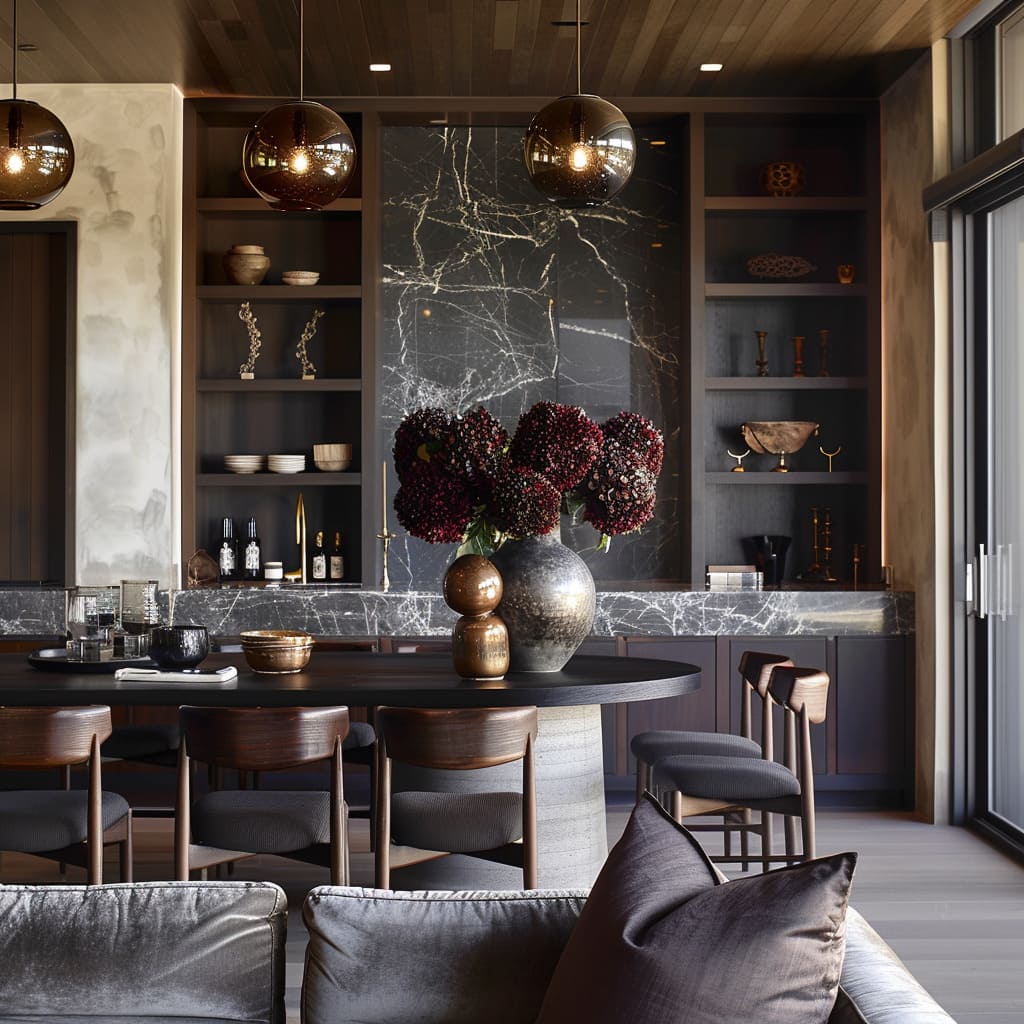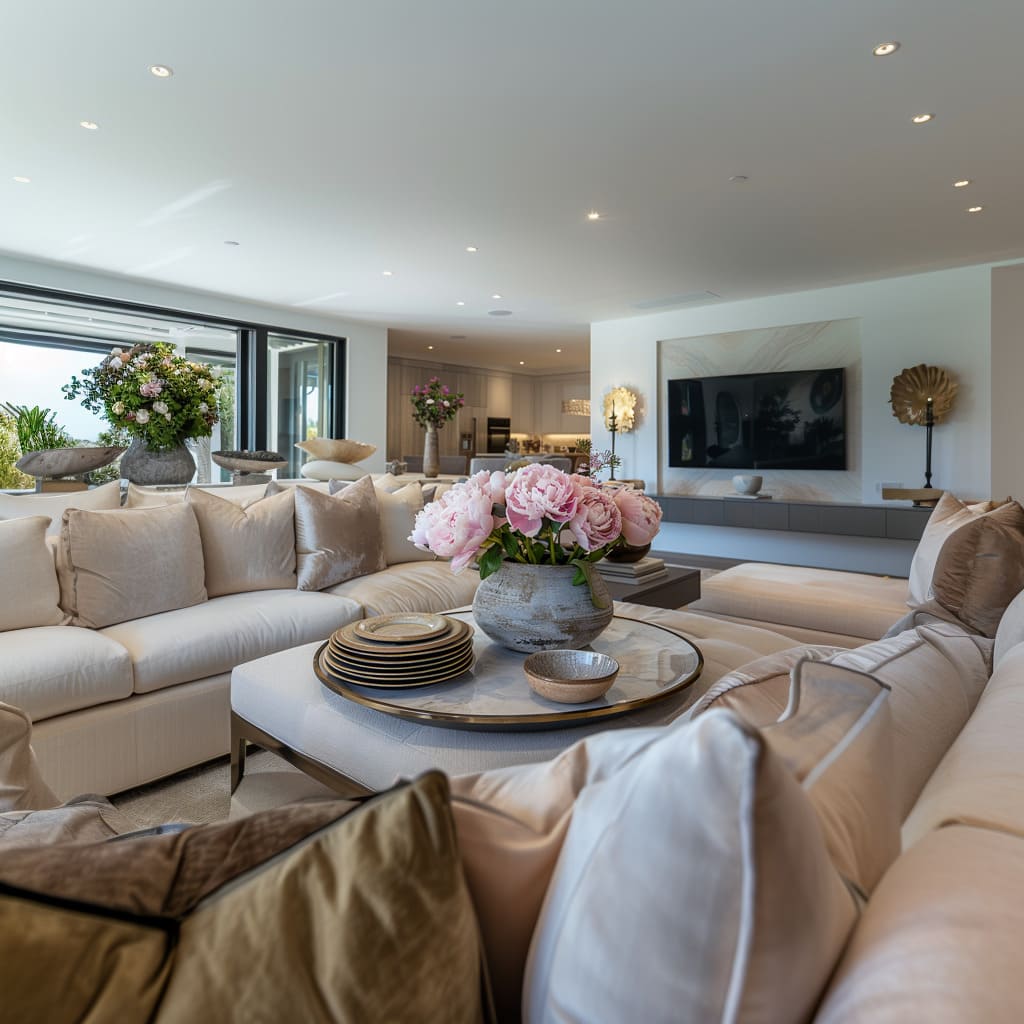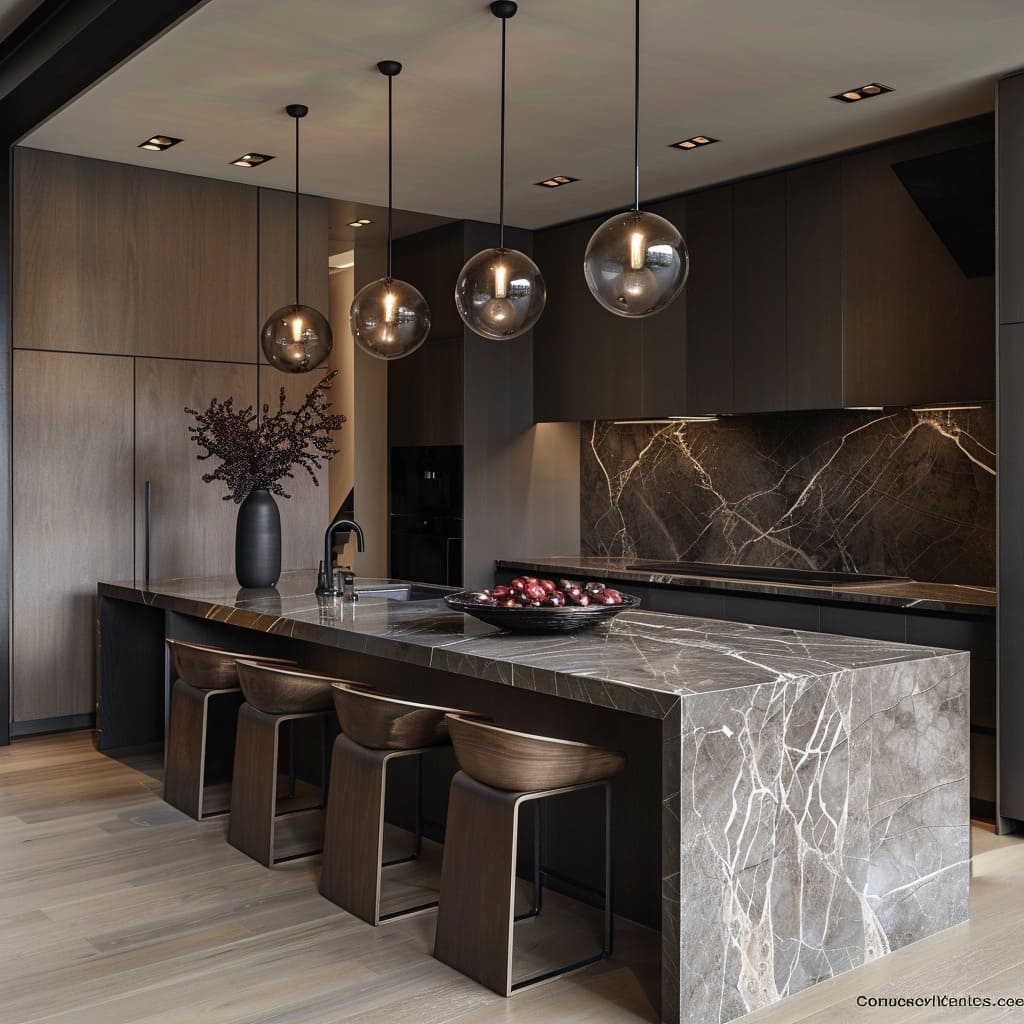This guide begins by outlining what distinguishes refined interior design from other decorating styles. The key is its seamless blend of modern elements with traditional elegance, creating spaces that are both stylish and timeless.
Refined interior design excels in merging historical elements with contemporary aesthetics. This section explores how antique charm can be preserved while integrating modern conveniences and styles to meet current tastes.
Further discussing historical influences, we look at specific examples where age-old design principles are applied in modern contexts, achieving a balance that appeals to contemporary sensibilities. What makes an interior design refined? This part delves into the essential characteristics: minimalism, controlled use of colors, and prioritizing high-quality materials that stand the test of time.
Minimalism plays a crucial role in refined interiors. By focusing on the ‘less is more’ philosophy, spaces become more breathable and visually relaxing, which is a hallmark of elegance.
Using a restrained color palette is pivotal in creating refined spaces. This section explains how to select and combine colors to achieve a subtle yet impactful environment.
Choosing the right color schemes is crucial in establishing the desired ambiance of refinement. Here, we discuss how to pick colors that are both soothing and aesthetically pleasing, without overwhelming the space.
Continuing with color schemes, the psychological impact of color choices in interior design is examined, showing how colors can influence the feel and perceived size of a room. This section offers practical advice on integrating complementary and accent colors to elevate the overall aesthetic of a room, providing depth and dynamic visuals.
The choice of materials significantly influences the atmosphere of any interior. This part provides insights into selecting luxurious materials like marble, hardwood, and metals to evoke elegance.
Discussing the appeal of natural materials, we explore how elements like wood and stone can add organic beauty and warmth to sophisticated interiors. Metal accents can add a contemporary edge to any space.
Here, strategies for incorporating brushed and polished metals in a refined setting are outlined.
Selecting the right furniture is critical in defining a space’s elegance. This section covers how to choose pieces that align with the principles of refined design, focusing on quality and design.
Beyond choosing furniture, how it is arranged can drastically affect the functionality and aesthetic of a room. Tips on effective furniture placement are discussed here.
This final paragraph in the sequence emphasizes the importance of functional layouts, ensuring that furniture not only looks good but also serves the practical needs of the space, completing the look of refined elegance. Lighting is a fundamental component in setting the ambiance of any interior.
This section explores how to strategically use lighting to create an inviting atmosphere that complements the refined nature of the space. Emphasis is placed on selecting statement lighting pieces that stand out as focal points.
Layered lighting is key to achieving a functional yet visually appealing interior. This paragraph details how to implement ambient, task, and accent lighting to enhance both the usability and aesthetics of a room.
To maintain a modern edge within elegant interiors, incorporating contemporary lighting designs can provide both style and efficiency. This section suggests ways to integrate modern lighting solutions that align with classic design principles.
Textured surfaces are essential for adding visual depth and tactile quality to any space. This part explains how to choose and place textured elements such as sculpted wood or hammered metals to enrich the visual experience.
Dynamic surfaces, such as mixed-material countertops or intricately patterned tiles, serve to captivate and draw interest. This section covers the selection and integration of these materials into refined interiors without overwhelming the design.
Introducing a combination of different textures can create a layered effect that enhances the room’s depth. Tips on how to mix fabrics, metals, and wood in a harmonious way are discussed here.
Decor plays a crucial role in defining the atmosphere of a room. This paragraph offers guidance on selecting pieces that reflect an understated elegance, including art and practical decor items.
Art selections can significantly influence the ambiance of a space. This section discusses how to choose art that serves as a statement while complementing the overall design aesthetic.
Functional decor, which combines beauty with utility, is essential in refined interiors. Examples of such decor include luxurious throws, decorative storage options, and elegant lighting fixtures that also serve a practical purpose.
The right fabrics are crucial for achieving both comfort and style in elegant interiors. This part focuses on selecting high-quality fabrics that offer texture and durability, such as silk, velvet, and fine wools.
Texture in fabrics can add significant interest and comfort to a room. This section delves into how to choose and use fabric textures that complement the overall design and contribute to a sense of luxury.
Coordinating fabric choices can enhance the visual harmony of a space. Advice on how to select and combine fabrics to create a cohesive look is provided here.
Achieving visual balance involves careful consideration of each design element’s role within the space. This paragraph offers tips on balancing various elements to create a harmonious and welcoming environment.
Integration of various design elements is key to creating a unified appearance. This section discusses how to seamlessly blend different materials, colors, and textures.
The final paragraph emphasizes the importance of ensuring that all elements not only look good together but also contribute to the functionality of the space, creating interiors that are not only visually appealing but also practical and comfortable.
Keeping up with current trends and innovations in interior design is essential for maintaining a refined aesthetic. This paragraph explores the latest advancements in technology and materials that can be adapted to elevate traditional spaces with a modern touch.
While trends can guide design choices, personalization ensures that interiors reflect individual style and needs. This section provides suggestions on how to incorporate leading design trends in a way that personalizes and respects the unique characteristics of each space.
Integration of smart home technologies offers both convenience and a futuristic edge. This paragraph discusses how to seamlessly integrate these technologies into elegant interiors without compromising the overall aesthetic.
Creating an elegant interior doesn’t have to be prohibitively expensive. This section offers practical advice on how to plan and allocate a budget that allows for the acquisition of high-end looks while keeping finances in check.
Choosing the right materials within a budget can make a significant difference in the project’s overall cost. Tips on selecting cost-effective alternatives that still offer quality and elegance are provided here.
This paragraph emphasizes the importance of investing in high-quality pieces rather than quantity. The focus is on selecting fewer, more distinctive items that will stand the test of time and add value to the home.
For those interested in personally crafting their space, this section offers do-it-yourself strategies. It includes tips on simple projects that can significantly impact the overall look of an interior.
This part of the article discusses how to repurpose and reimagine existing furniture and decor to fit a more refined aesthetic, offering a sustainable and budget-friendly approach to interior design.
DIY enthusiasts can benefit from learning basic interior design skills. This paragraph suggests resources and tools that can help beginners design and execute their projects with a professional touch.
The article concludes by summarizing the key points discussed, emphasizing the accessibility of creating refined elegance in one’s own space. It encourages readers to apply these insights to embrace a more elegant and personalized interior, regardless of budget or expertise.
